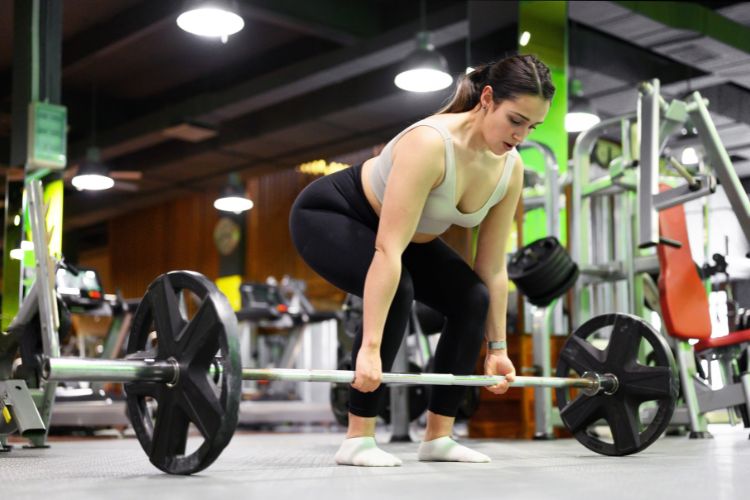Sign up for workout ideas, training advice, reviews of the latest gear and more.






Strength training has become an essential part of fitness routines for women, offering numerous benefits such as increased muscle tone, improved bone density, and enhanced metabolic rate. One of the most effective methods for women to maximize these benefits is through progressive overload strength training. This approach involves gradually increasing the demands on your muscles to ensure continuous improvement. In this blog post, we’ll dive deep into what progressive overload is, why it’s crucial for women, and how to implement it effectively into your fitness routine.
Progressive overload is a fundamental principle in strength training that involves gradually increasing the intensity, volume, or difficulty of your workouts over time. The goal is to challenge your muscles consistently, forcing them to adapt and grow stronger. Without progressive overload, your body will plateau, and your progress will stall.
Women often face unique challenges when it comes to strength training, including hormonal fluctuations, societal stereotypes, and misconceptions about bulking. Progressive overload helps women:
Implementing progressive overload doesn’t mean you need to lift heavier weights every single session. There are several ways to progressively challenge your muscles. Below, we’ll explore the most effective strategies.
The most straightforward way to apply progressive overload is by increasing the amount of weight you lift. For example, if you’re currently squatting 50 pounds for 10 reps, aim to increase the weight to 55 pounds over the next few weeks.
Tip for Women: Don’t be afraid to lift heavier weights. Women typically have less muscle mass than men, so lifting heavier is essential for building strength.
If increasing weight feels too challenging, you can start by adding more repetitions or sets to your exercises. For instance, if you’re performing 3 sets of 10 push-ups, try increasing to 4 sets of 10 or 3 sets of 12.
Why This Works: Adding reps or sets increases the total volume of your workout, which is a key driver of muscle growth.
Shortening your rest periods is another way to intensify your workouts. If you typically rest for 60 seconds between sets, try reducing it to 45 seconds.
Caution: This method is more taxing on your cardiovascular system, so it’s best suited for intermediate or advanced trainees.
Training more often can also help you achieve progressive overload. For example, if you’re currently strength training twice a week, consider adding a third session.
Note: Ensure you’re allowing adequate recovery time to avoid overtraining.
Once you’ve mastered the basics, you can incorporate advanced techniques like drop sets, supersets, or tempo training to further challenge your muscles.
Example: During a drop set, you perform an exercise to failure, then immediately reduce the weight and continue for additional reps.
Creating a structured program is essential for consistent progress. Below is a sample 8-week progressive overload plan tailored for women.
While progressive overload is highly effective, there are some common pitfalls to watch out for.
Jumping too quickly into heavy weights or high volume can lead to injury. Always prioritize proper form and gradual progression.
Muscles grow during rest, not during workouts. Ensure you’re getting enough sleep, nutrition, and recovery time.
Strength training requires adequate protein and calorie intake to support muscle growth. Women should aim for 0.8-1 gram of protein per pound of body weight daily.
While isolation exercises like bicep curls are great, compound movements like squats and deadlifts should form the foundation of your program.
Nutrition plays a critical role in supporting your strength training goals. Here’s how to optimize your diet for progressive overload.
Protein is essential for muscle repair and growth. Include high-quality sources like lean meats, fish, eggs, dairy, and plant-based options like beans and lentils.
Carbohydrates provide the energy needed for intense workouts. Focus on complex carbs like whole grains, fruits, and vegetables.
Fats support hormone production, which is crucial for muscle growth and recovery. Include sources like avocados, nuts, seeds, and olive oil.
Dehydration can impair performance and recovery. Aim to drink at least 2-3 liters of water daily, more if you’re sweating heavily.
Tracking your progress is essential to ensure you’re effectively applying progressive overload. Here are some ways to monitor your improvements.
Record the weights, reps, and sets for each exercise. This will help you identify when it’s time to increase intensity.
Photos can provide visual evidence of changes in your physique that may not be immediately noticeable.
Regularly test your one-rep max (1RM) for key lifts like squats, deadlifts, and bench presses.
Use tools like body fat calipers or bioelectrical impedance scales to track changes in muscle mass and fat percentage.
Even with progressive overload, you may eventually hit a plateau. Here’s how to break through.
Switch up your exercises, rep ranges, or training split to shock your muscles.
Take a week to reduce intensity and volume, allowing your body to recover fully.
Identify and target weaker muscle groups or lifts to bring them up to par.
Ensure you’re eating enough to support your training demands.
Beyond the physical benefits, progressive overload can have a profound impact on your mental well-being.
Pushing through challenging workouts builds mental toughness and resilience.
Achieving new personal records (PRs) can significantly boost your self-esteem.
Strength training has been shown to reduce stress and anxiety levels.
Consistently applying progressive overload requires discipline, which can translate to other areas of life.
Progressive overload strength training is a powerful tool for women looking to build strength, improve body composition, and enhance overall health. By gradually increasing the demands on your muscles, you can achieve continuous progress and avoid plateaus. Remember to prioritize proper form, nutrition, and recovery to maximize your results.
Whether you’re a beginner or an experienced lifter, incorporating progressive overload into your routine can help you reach your fitness goals and unlock your full potential. So grab those weights, challenge yourself, and watch as you grow stronger, both physically and mentally!
By following this guide, you’ll be well on your way to mastering progressive overload and reaping the countless benefits it offers. Happy lifting!
Stay up to date on the latest women’s health, fitness and lifestyle trends and tips.